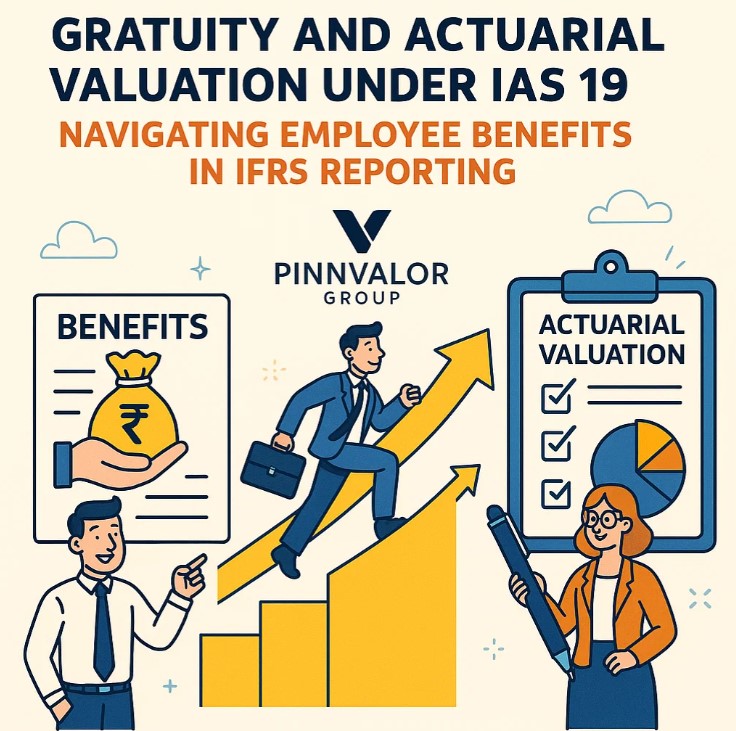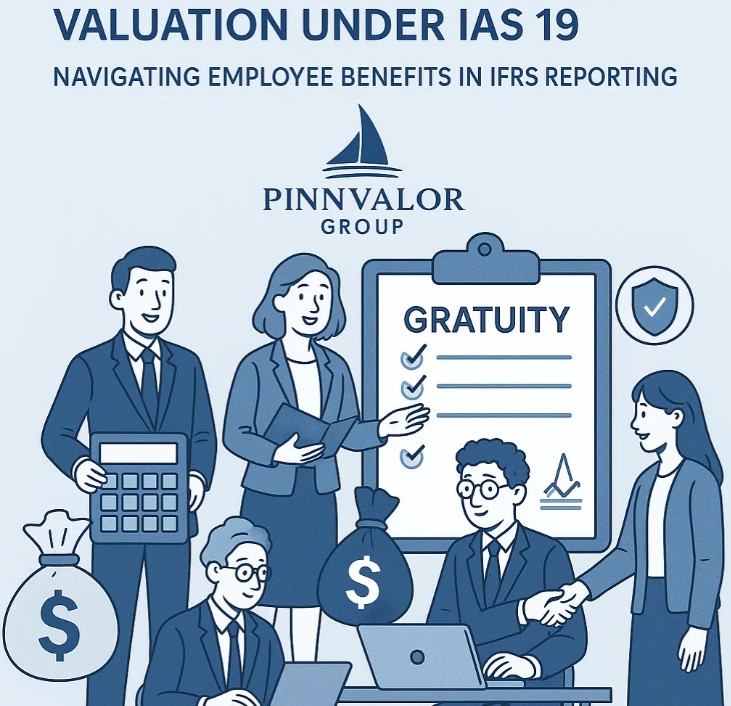
Gratuity and Actuarial Valuation under IAS 19: Navigating Employee Benefits in IFRS Reporting
In today’s globalized financial environment, transparent and accurate accounting for employee benefits is not just a compliance requirement—it’s a vital part of financial stewardship. Among these, gratuity obligations, typically found in defined benefit plans, require rigorous actuarial estimation and careful financial presentation.
IAS 19 – Employee Benefits, the international accounting standard under IFRS, sets out how such obligations must be measured, recognized, and disclosed. This blog explores how gratuity is treated under IAS 19 and why actuarial valuation is indispensable for compliance and credibility.
Are you valuing gratuity the IFRS way—or leaving room for surprises?
Actuarial valuation under IAS 19 transforms employee obligations into strategic insights. It's not just about numbers—it's about managing future risk with today’s clarity.
🧾 Understanding IAS 19: A Global Framework
IAS 19 governs the accounting treatment of all types of employee benefits, including:
- Short-term benefits (e.g., wages, paid leave)
- Post-employment benefits (e.g., pensions, gratuity)
- Other long-term benefits
- Termination benefits
Gratuity falls under post-employment defined benefit plans, meaning the employer has an obligation to provide agreed-upon benefits in the future, based on years of service and final salary.
💰 What is Gratuity in an IFRS Context?
Gratuity is a lump-sum payment made to employees at the end of their employment, typically calculated based on last drawn salary and length of service.
From an IFRS perspective, gratuity is a form of deferred compensation that must be measured and disclosed transparently.
Why is it considered a defined benefit?
- Payment is uncertain and paid in the future
- Employer bears the risk of higher-than-expected costs
- Obligation accrues with each year of employee service
📐 The Role of Actuarial Valuation under IAS 19
IAS 19 requires that gratuity liabilities be estimated using actuarial valuation, which projects the value of future benefit payments and discounts them to present value.
📊 Key Elements of Actuarial Valuation:
- Projected Unit Credit Method (PUCM): Required under IAS 19, this method attributes benefit to periods of service and considers salary increases.
- Actuarial Assumptions: Includes financial (discount rate, salary growth, inflation) and demographic (mortality, turnover) factors.
- Discount Rate: Based on market yields of high-quality corporate bonds (or government bonds if corporate bond market is not deep).
🧾 Recognition and Measurement
- Defined Benefit Obligation (DBO): Present value of expected gratuity payments based on actuarial valuation.
- Plan Assets: Deducted if maintained (e.g., gratuity fund or insurance plan).
- Net Defined Benefit Liability: DBO – Fair Value of Plan Assets.
🧮 Accounting Treatment under IAS 19
| Component | Treatment |
|---|---|
| Service Cost (Current & Past) | Recognized in Profit or Loss |
| Net Interest | Recognized in Profit or Loss |
| Remeasurements (Actuarial Gains/Losses) | Recognized in Other Comprehensive Income (OCI) |
| Settlements/ Curtailments | Immediate recognition in P&L |
Note: Remeasurements go to OCI and are not reclassified to profit or loss later.

📌 Disclosure Requirements under IAS 19
The standard mandates detailed disclosure of:
- Opening and closing reconciliation of DBO
- Movement in plan assets
- Description of the benefit plan
- Key actuarial assumptions used
- Sensitivity analysis for key assumptions
- Maturity profile of expected payments
🔄 Ind AS 19 vs IAS 19: Key Differences
| Aspect | Ind AS 19 (India) | IAS 19 (IFRS) |
|---|---|---|
| Discount Rate | Based on government bond yields | Based on high-quality corporate bonds |
| Interpretation Source | ICAI guidance notes | IFRIC 14, IASB framework |
| Actuarial Method | PUCM | PUCM |
| OCI Treatment | Not recycled to P&L | Not recycled to P&L |
💡 The principles are aligned. Variations arise due to market or regulatory differences.
🎯 Practical Relevance for Companies
- Accurate forecasting of long-term obligations
- Investor confidence through transparent disclosures
- Global comparability of financial statements
- Audit readiness through actuarial reports and documentation
✅ Conclusion
IAS 19 turns gratuity accounting from guesswork into precision. With actuarial valuation at its core, the standard ensures that employee benefit obligations are measured and presented with clarity and consistency.
For organizations expanding across borders, aligning with IAS 19 is a strategic move—balancing regulatory compliance with financial integrity.
